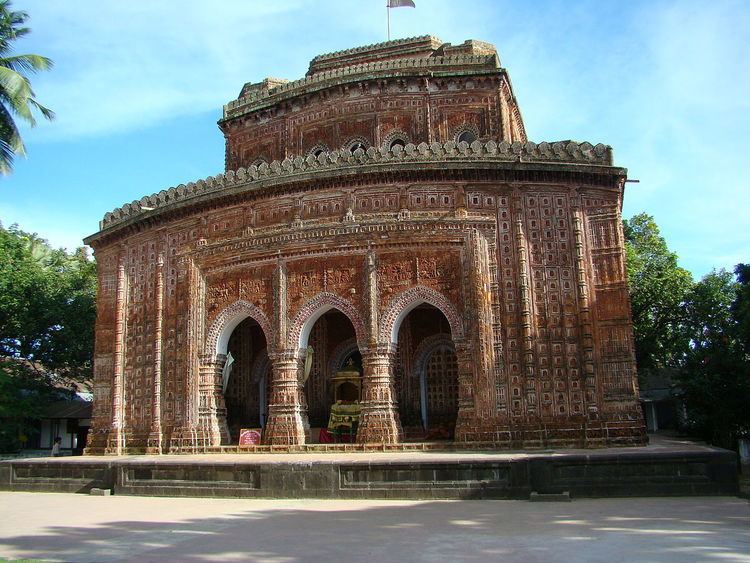Other names Kantanagar Temple | Proper name Kantajew Mandir | |
 | ||
Location near the Hajee Mohammed Danesh Science and Technology university far about 12 kilometre Address Kantanagar, Kaharole, 5200, Bangladesh Similar Mahasthangarh, Somapura Mahavihara, Sixty Dome Mosque, Dhakeshwari Temple, Tajhat Palace | ||
Kantajew temple
Kantanagar Temple, commonly known as Kantaji Temple or Kantajew Temple (Bengali: কান্তজীউ মন্দির) at Kantanagar, is a late-medieval Hindu temple in Dinajpur, Bangladesh. The Kantajew Temple is one of the most magnificent religious edifices belonging to the 18th century. The temple belongs to the popular Hindu Kanta or Krishna and this is most popular with the Radha-Krishna cult (assemble of memorable love) in Bengal. This beautiful temple is dedicated to Krishna and his wife Rukmini. Built by Maharaja Pran Nath, its construction started in 1704 CE and ended in the reign of his son Raja Ramnath 1722 CE, during the reign of his son Maharaja Ramnath. It boasts one of the greatest examples on terracotta architecture in Bangladesh and once had nine spires, but all were destroyed in an earthquake that took place in 1897.
Contents
- Kantajew temple
- Kantajew temple in bangladesh kantaji temple dinajpur bangladesh
- Architecture
- References
Kantajew temple in bangladesh kantaji temple dinajpur bangladesh
Architecture
The temple was built in a navaratna (nine-spired) style before the destruction caused by the earthquake of 1897. The characteristic features of the erections are the four centered and wide multi-cusped arches, the plastered surface of the walls having immense rectangular and square panelings, prominence of the central archway and the central mihirab by making the slightly larger and setting in a projected fronton in the outside directions, the use of ornamental turrets on the either side of the fronons, the semi-octagonal mirirab apertures,the archway opening under half-domes, the Persian muquarnas work in stucco inside the half-domes over the entrance arches and mihirab niches,the bulbous outline of the domes with constructed necks, domes on octagonal drums with lotus and kalasa finials as the crowning elements, the round pendentives to make up the phase of transition for the domes and the multi-faced corner towers rising high above the horizontal merloned parapets.
